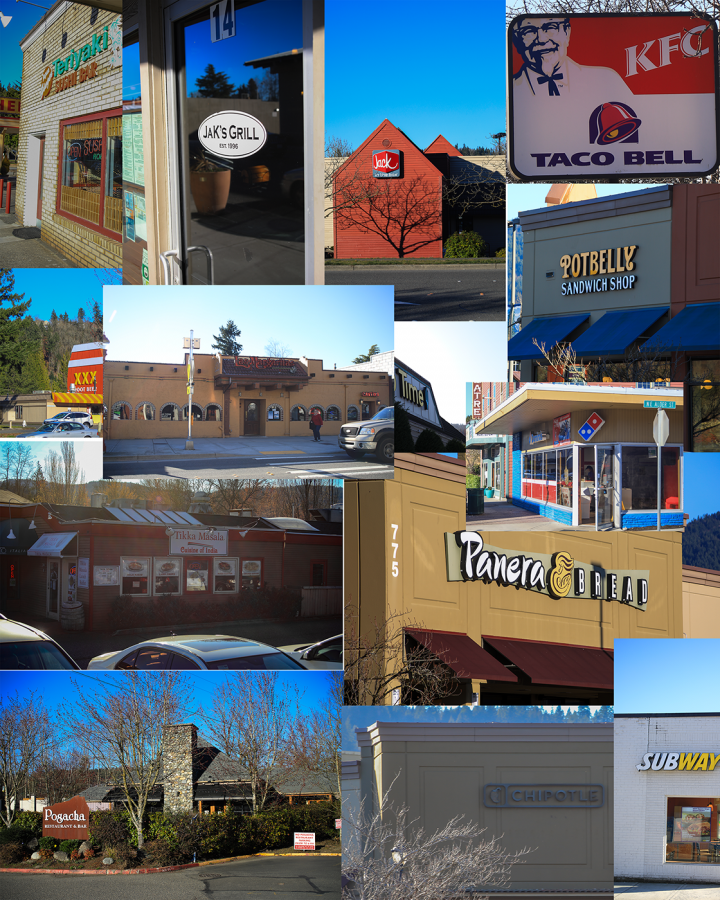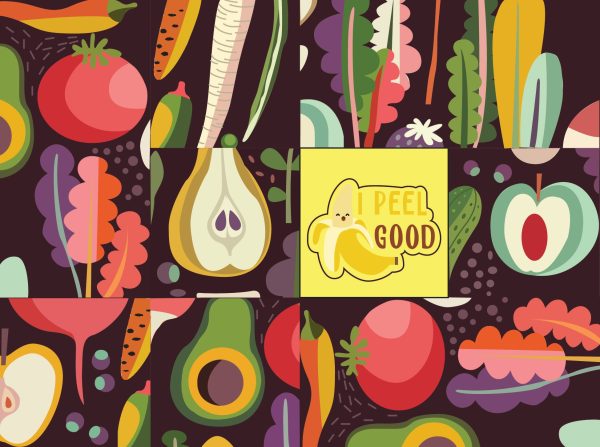All About Food
With so many options, from what to eat to where to eat, teenagers make a multitude of decisions regarding food every day.
March 29, 2019
To teenagers, food is one of the most important and ever-present parts of life. Whether enjoying a homemade meal, fast food, or a bite at a local eatery, teenagers and food go hand in hand. And with so many options, from what to eat to where to eat, teenagers make a multitude of decisions regarding food every day.
One crucial choice involves choosing the right (or wrong) foods. According to U.S. News, the daily nutritional guidelines for teens are as follows: 45 to 60 grams of protein, 130 grams of carbohydrates, three cups of vegetables, and one and a half cups of fruit for girls, and two cups of fruit for boys. However, teenagers lead busy lives, due to early mornings for school and late nights at practice or studying. Nutrition can often become an afterthought, if it is in the minds of teens at all. According to junior Jonathon Laub, teenagers do not “get the proper nutrition because it’s just always about time and how much time you have so they just eat whatever they can get.”
For student athletes, however, nutrition is key for strong performance. Freshman Tanner Geraci believes, “Nutrition is really important, especially as an athlete. If you don’t have good nutrition, everything goes down the drain.” Sophomore Lizzy Jang, another student athlete, points out that without proper nutrition, “it’s really easy to get hurt.”
Certainly not only student athletes take nutrition into consideration, but in general, many teens trade convenience over healthy choices. Senior Marcus Tang believes that schools could play a factor in improving their students’ nutrition by “adding more fruits and vegetables to their lunches.”
Many people now try to make healthier choices through new diets such as the Keto and Paleo diets. Healthline describes the Keto diet as a “very low-carb, high-fat diet that…involves drastically reducing carbohydrate intake and replacing it with fat. This reduction in carbs puts your body into a metabolic state called ketosis.” The Paleo diet, according to Mayo Clinic, is a “dietary plan based on foods similar to what might have been eaten during the Paleolithic era…typically [including] lean meats, fish, fruits, vegetables, nuts and seeds…[and limiting] foods…[including] dairy products, legumes and grains.” With the emergence of these widely adopted diets, it can be hard to determine whether they help one balance nutrition or if these diets prevent people from getting all their nutrients.
Senior Shayna Wagner believes the diets “are too extreme and people leave out essential nutrients.” Jang, whose mom has been on the Paleo diet for some time, says that her mom “really likes it…but I also know it’s a lot to give up on.”
Instead of a very restrictive diet like Paleo and Keto, Laub argues that “a diet should be one that you can live with for the rest of your life, so it should be not just cutting out everything, but cutting down some snacks and some foods.” Still, there likely will always be new diets that emerge over time and gain popularity. As Geraci points out, “there’s always a new science [report] that comes out,” and he believes “you just have to research if it’s good or not actually for you.”
Aside from nutrition, deciding where to eat is another major decision for teenagers. Eating out can be a great opportunity to get together with friends, try new foods, and enjoy freedom. Out of the eight students I interviewed, some ate out up to three times a week while others ate out rarely, but most went out to eat once a week or a couple times a month.
Issaquah High School students’ favorite places to eat range from local to nationwide favorites. Freshman Samantha Chase, Tang, and Underwood all cite The Habit Burger Grill in the Issaquah Highlands as one of their favorite places to eat. Junior Sarah Rose Manzella and Jang opt for Subway, which is no surprise given that, according to Business Insider, as of 2018, 18.5 percent of all fast food restaurants were Subways. Some students, like Wagner, “like to switch it up and try new restaurants,” particularly “local, small places.”
Do students tend to eat at different places for lunch versus dinner, or during the school year versus the summer? Tang states that “for lunch, we kind of go for something that’s fast and then for dinner usually we go for somewhere nicer.” Jang notes that she will “opt for something really unhealthy for lunch and then something pretty healthy for dinner.” With more time to spend at friends’ houses, Underwood “[eats] out a little less during the summer,” while Wagner is the opposite, saying, “I probably spend a little more during the summer [on meals out] because I’m usually working during the summer and I have more time.”
High school typically marks an increase in freedom for many teenagers, especially as they get their licenses and are able to drive for meals out. Some students like Geraci will travel to “Bellevue [and] Factoria.” Farther still, Wagner says her and her friends “like to go to Seattle to eat sometimes.”
On the topic of eating out, what I call ‘food phenomenons’ have reached IHS: Bubble, or Boba Tea, and Shake Shack. Of course, both of these have been around for a while—particularly Boba Tea, which started from a traditional milk tea drink in Asia. Shake Shack, on the other hand, has spent less time in the public eye. According to Shake Shack’s official website, they began as a hot dog cart in Madison Square Park in 2001, upgraded to a kiosk with a more expansive menu in 2004, and then transformed into the restaurant that reached Seattle, which opened on Oct. 11, 2018.
The Seattle Times refers to Shake Shack as a “cult burger chain,” and while I personally have never visited, I frequently hear people talk about going to the burger restaurant. Like me, Jang explains, “I haven’t been there, but I’ve heard a lot of people have.” Wagner says that s and her friends “definitely go there;’ Tang, Chase, and Geraci also say their friends, peers, and they themselves go to Shake Shack.
Comparatively, Boba Tea is far more popular, with a variety of locations in Issaquah alone. Out of the eight students I interviewed, six answered that they like to get Boba Tea. One of the most popular locations is Sharetea, which, according to the Sharetea official website, opened in 1992 and now boasts a presence in 18 countries. When asked if she, her friends, or peers get Boba Tea, Jang responded, “Yes, oh my God, I love Bubble Tea,” citing Sharetea as her favorite place to grab the drink.
How do places like Shake Shack and Boba Tea gain such widespread popularity? Manzella thinks, “social media [and] celebrities” play a large role, while Underwood believes that “presentation [is] key.” Geraci points out that these places are “good meeting spots” as well as places to “just drop in and grab a drink or something.” Whether it is a single factor or a combination of all three, Shake Shack and Boba Tea are certainly ‘food phenomenons’ for students at IHS.
Finally, when eating out, one last important decision must be made–depending on who you ask. In the Issaquah area, both chains and local restaurants offer a variety of options, and often the same selections. When asked if they had a preference at eating at one type of eatery over the other, overall, students did not value one more than the other. Underwood states that “food is food,” and Manzella explains that she would “personally choose between the two if one was less busy than the other, then [she would] probably go there.” Like many aspects of a teenager’s life, convenience is key.
Every day, teenagers make choices regarding food: to pick the healthier meal to better their nutrition, to drive ten minutes or thirty for a bite to eat, to grab a food item from a hot location, or to get a sandwich from Chicago Pastrami or Subway. No matter the decision, the overarching theme is clear: teenagers are all about food.







